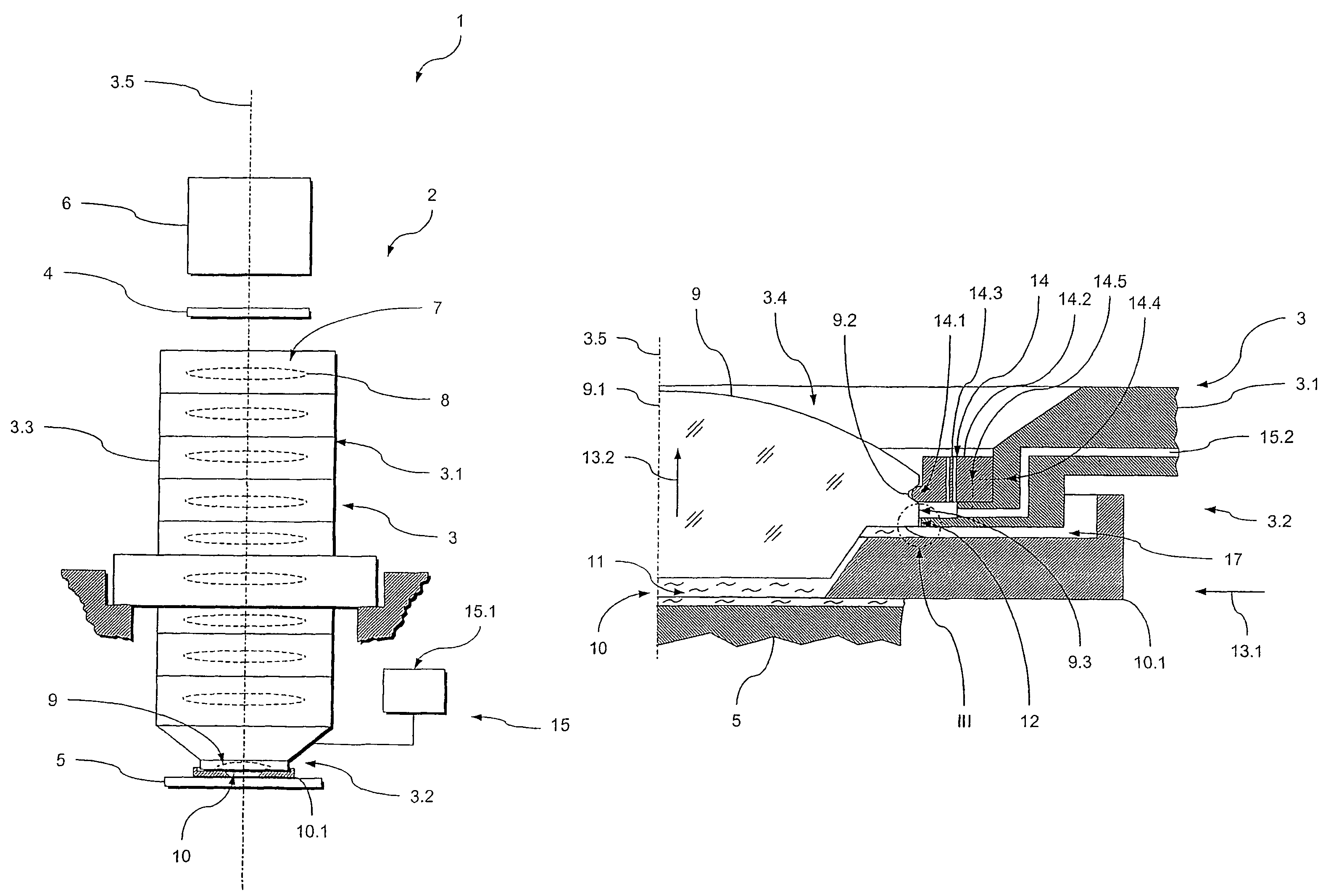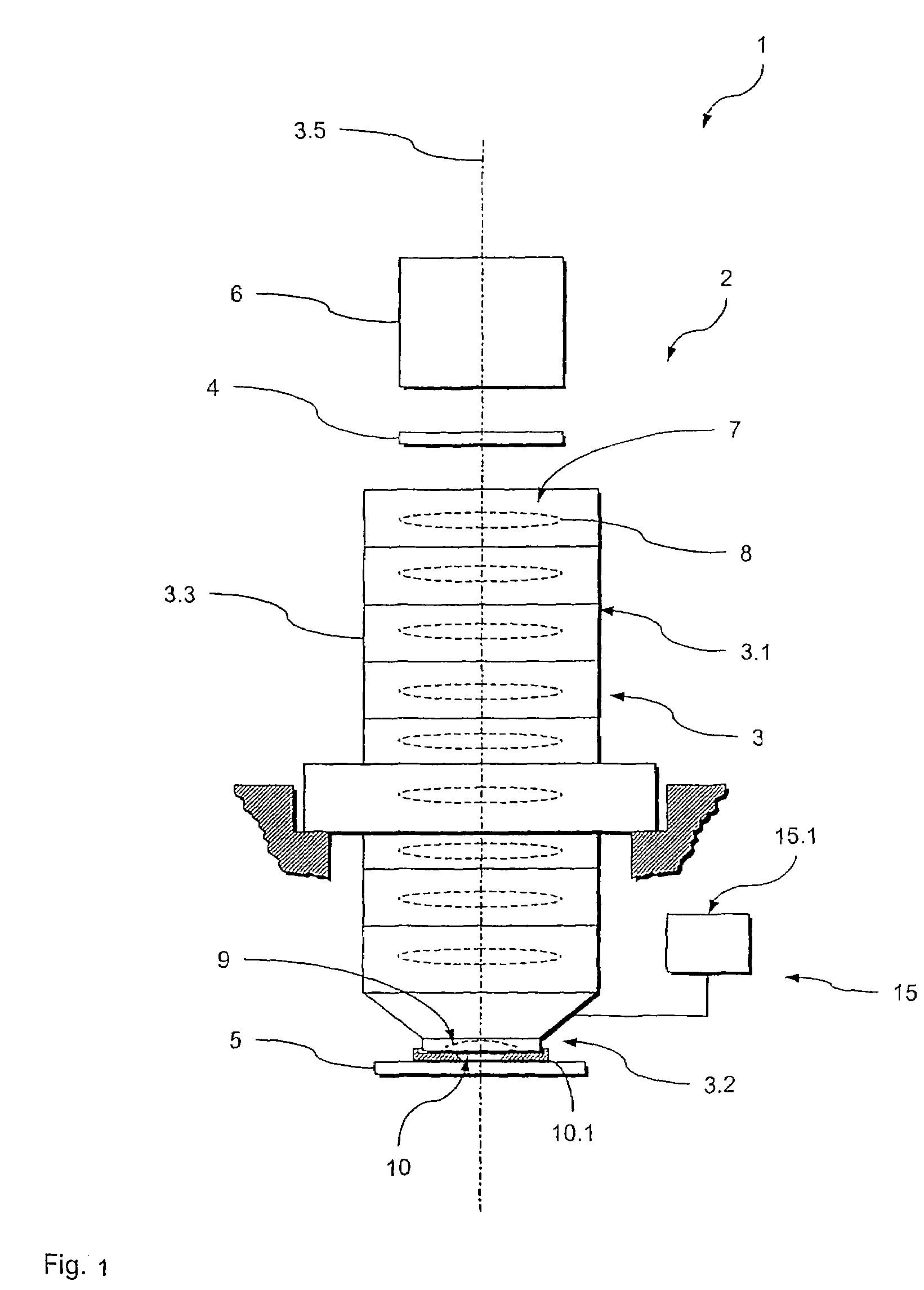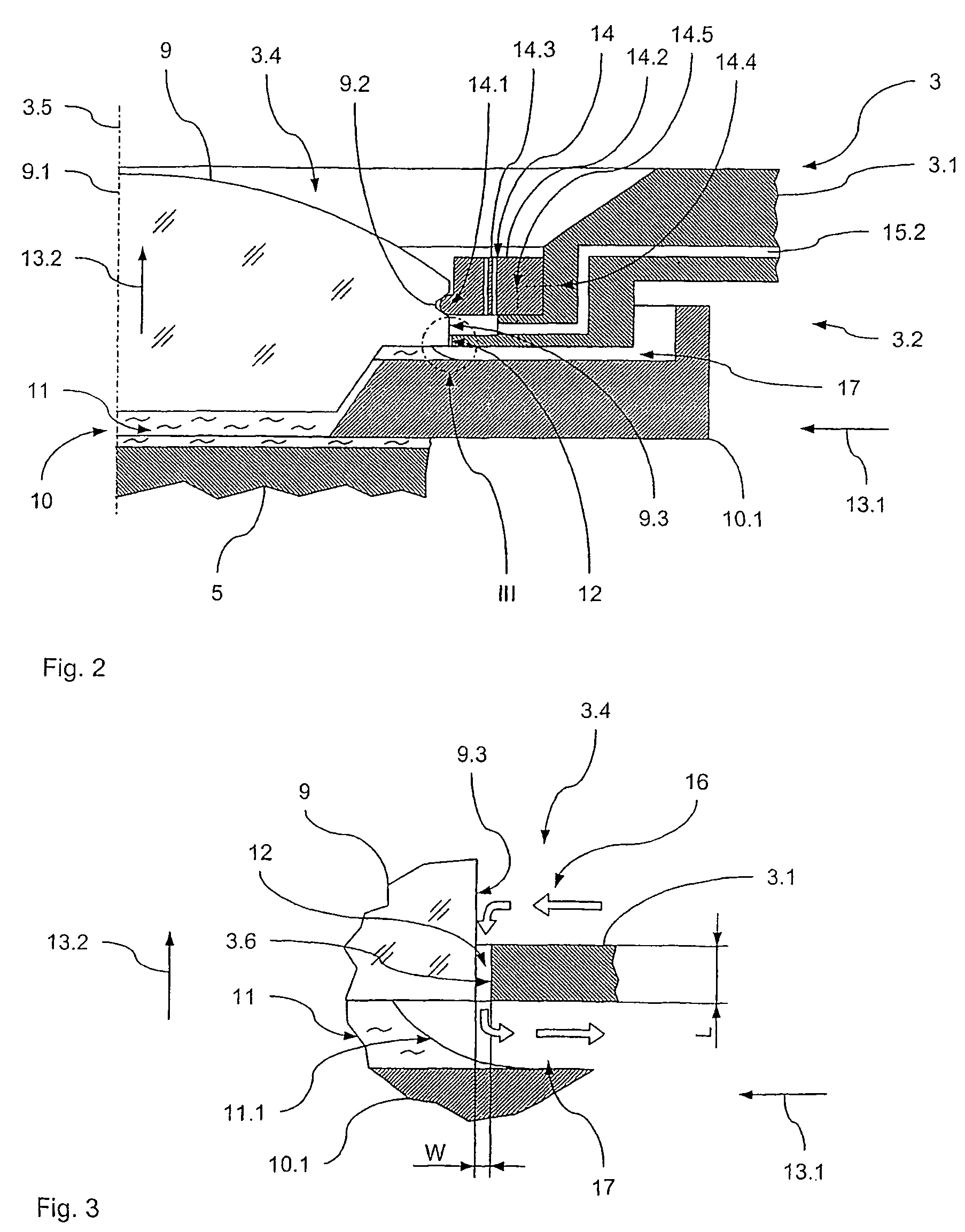Optical element unit for exposure processes
a technology of optical elements and exposure processes, applied in the field of optical element units for exposure processes, can solve the problems of undesirable adverse effects on the useful life of the glue seal, and degradation of the optical performance of the optical system, and achieve good and long-term reliable imaging properties of the optical system
- Summary
- Abstract
- Description
- Claims
- Application Information
AI Technical Summary
Benefits of technology
Problems solved by technology
Method used
Image
Examples
first embodiment
[0041]In the following, a first preferred embodiment of an optical exposure apparatus 1 according to the present invention comprising an optical projection system 2 with an optical element unit 3 according to the present invention will be described with reference to FIGS. 1 to 3.
[0042]The optical exposure apparatus 1 is adapted to transfer an image of a pattern formed on a mask 4 onto a substrate 5. To this end, the optical exposure apparatus 1 comprises an illumination system 6 illuminating said mask 4 and the optical element unit 3. The optical element unit 3 projects the image of the pattern formed on the mask 4 onto the substrate 5, e.g. a wafer or the like.
[0043]To this end, the optical element unit 3 holds an optical element group 7. This optical element group 7 is held within a housing 3.1 of the optical element unit 3. The optical element group 7 comprises a number of optical elements 8, such as lenses, mirrors or the like, and an ultimate optical element in the form of a la...
second embodiment
[0071]In the following, a second preferred embodiment of an optical exposure apparatus 101 according to the present invention comprising an optical projection system 102 with an optical element unit 103 according to the present invention will be described with reference to FIGS. 4 and 5.
[0072]The optical exposure apparatus 101 is adapted to transfer an image of a pattern formed on a mask 104 onto a substrate 105. To this end, the optical exposure apparatus 101 comprises an illumination system 106 illuminating said mask 104 and the optical element unit 103. The optical element unit 103 projects the image of the pattern formed on the mask 104 onto the substrate 105, e.g. a wafer or the like.
[0073]To this end, the optical element unit 103 holds an optical element group 107. This optical element group 107 is held within a housing 103.1 of the optical element unit 103. The optical element group 107 comprises a number of optical elements 108, such as lenses, mirrors or the like, and a las...
third embodiment
[0095]In the following, a third preferred embodiment of an optical exposure apparatus 201 according to the present invention comprising an optical projection system 202 with an optical element unit 203 according to the present invention will be described with reference to FIGS. 6 and 7.
[0096]The optical exposure apparatus 201 is adapted to transfer an image of a pattern formed on a mask 204 onto a substrate 205. To this end, the optical exposure apparatus 201 comprises an illumination system 206 illuminating said mask 204 and the optical element unit 203. The optical element unit 203 projects the image of the pattern formed on the mask 204 onto the substrate 205, e.g. a wafer or the like.
[0097]To this end, the optical element unit 203 holds an optical element group 207. This optical element group 207 is held within a housing 203.1 of the optical element unit 203. The optical element group 207 comprises a number of optical elements 208, such as lenses, mirrors or the like, and a last...
PUM
| Property | Measurement | Unit |
|---|---|---|
| gap width | aaaaa | aaaaa |
| gap length | aaaaa | aaaaa |
| sealing gap width | aaaaa | aaaaa |
Abstract
Description
Claims
Application Information
 Login to View More
Login to View More - R&D
- Intellectual Property
- Life Sciences
- Materials
- Tech Scout
- Unparalleled Data Quality
- Higher Quality Content
- 60% Fewer Hallucinations
Browse by: Latest US Patents, China's latest patents, Technical Efficacy Thesaurus, Application Domain, Technology Topic, Popular Technical Reports.
© 2025 PatSnap. All rights reserved.Legal|Privacy policy|Modern Slavery Act Transparency Statement|Sitemap|About US| Contact US: help@patsnap.com



